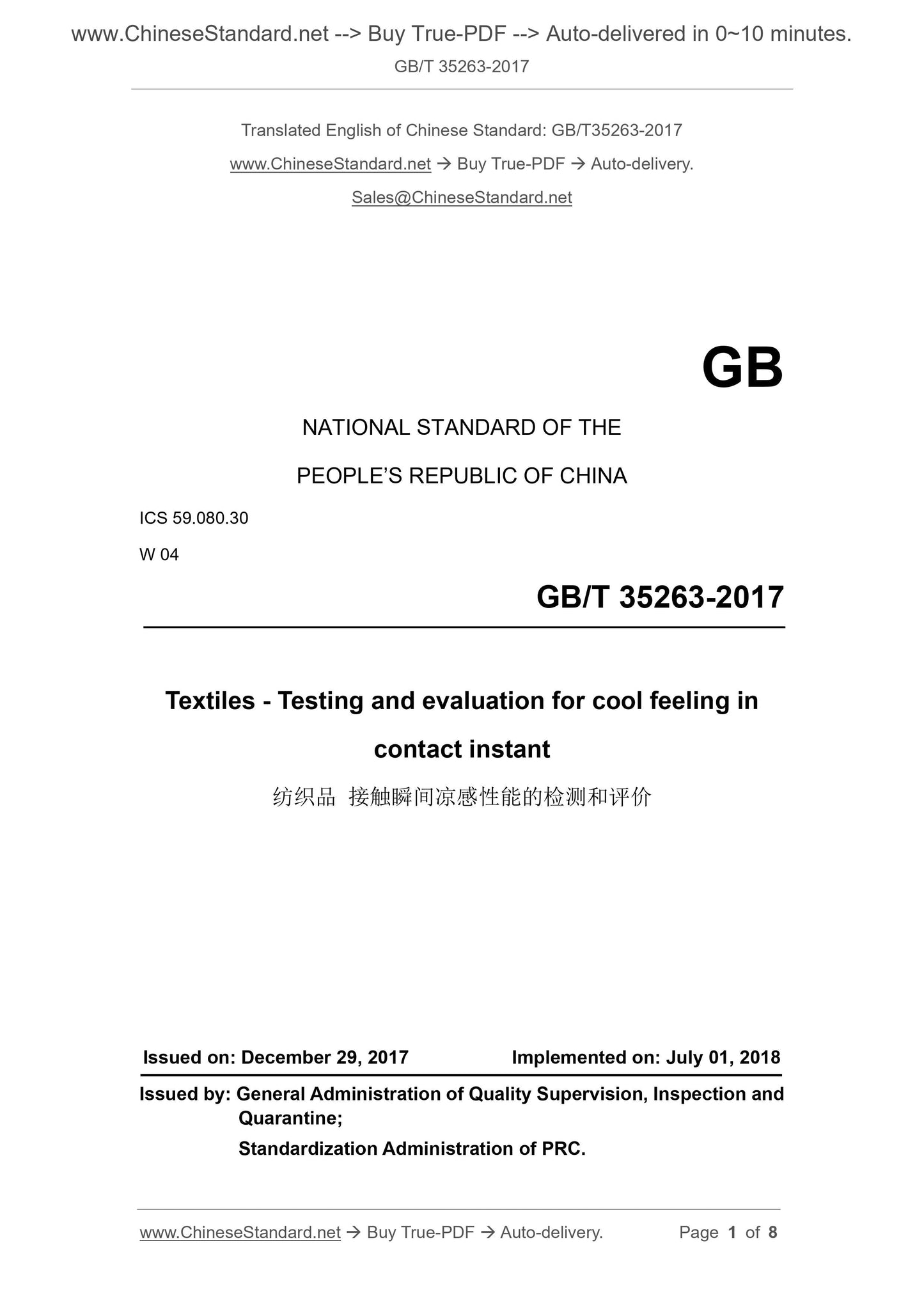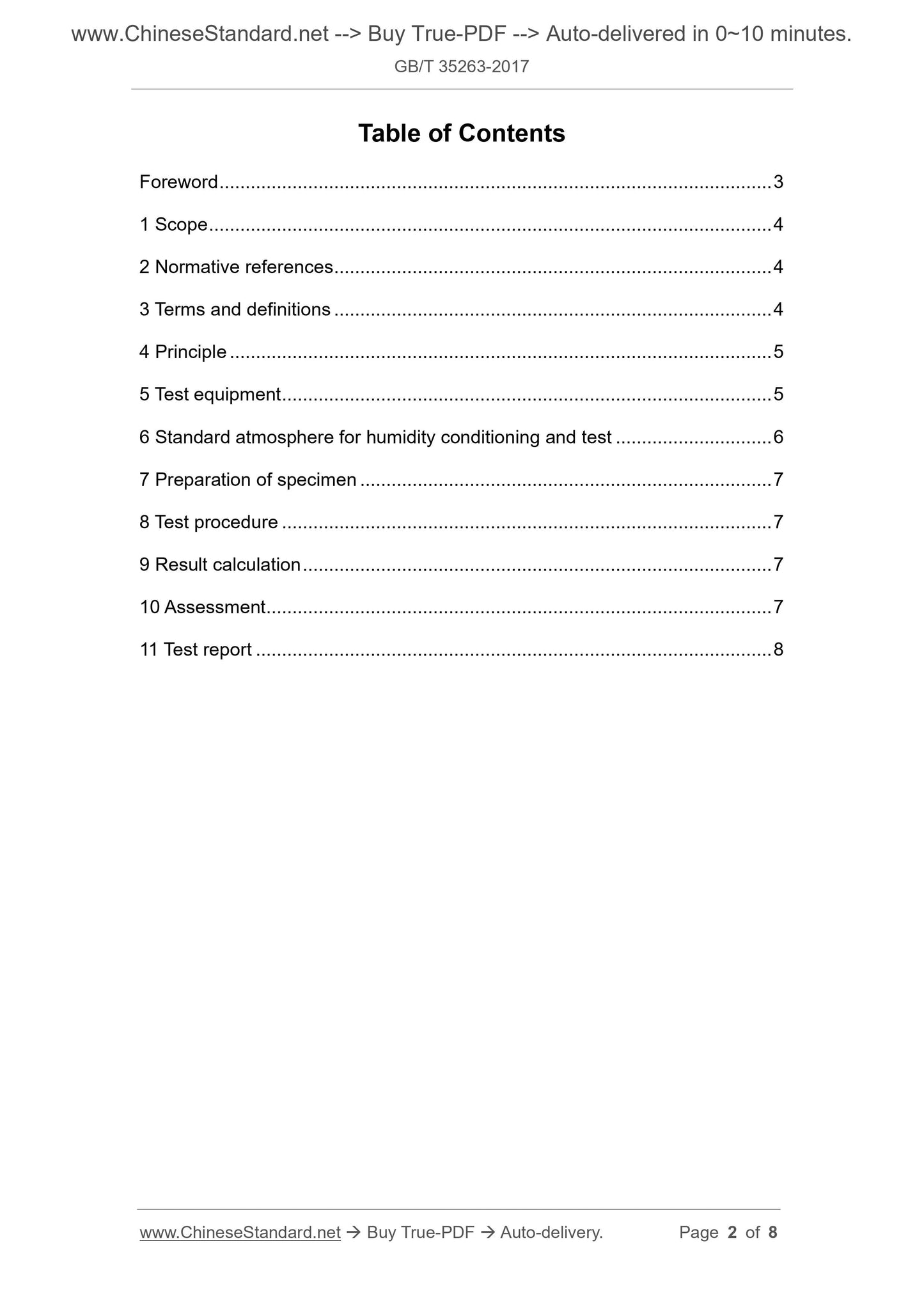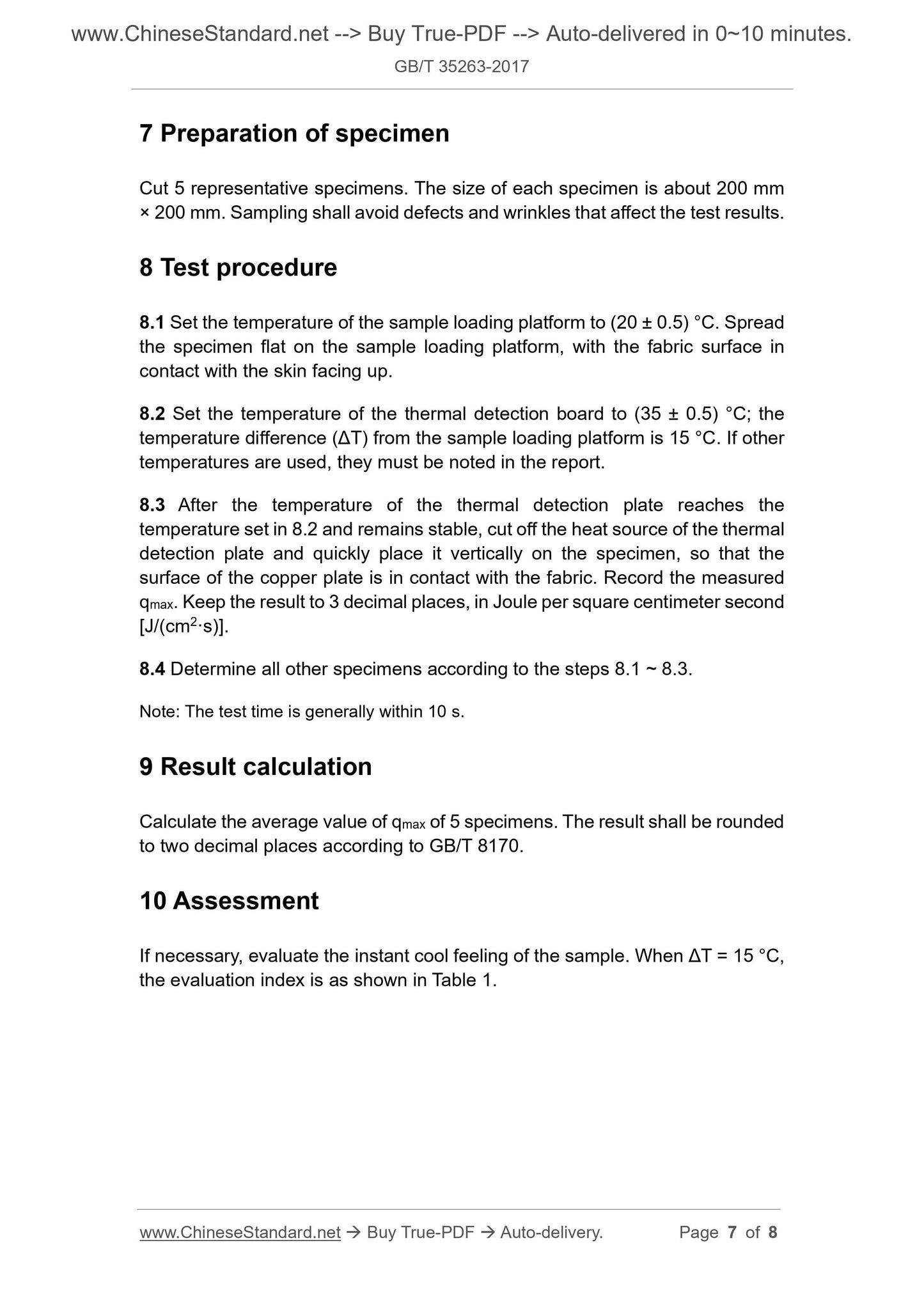1
/
of
4
www.ChineseStandard.us -- Field Test Asia Pte. Ltd.
GB/T 35263-2017 English PDF (GB/T35263-2017)
GB/T 35263-2017 English PDF (GB/T35263-2017)
Regular price
$110.00
Regular price
Sale price
$110.00
Unit price
/
per
Shipping calculated at checkout.
Couldn't load pickup availability
GB/T 35263-2017: Textiles -- Testing and evaluation for cool feeling in contact instant
Delivery: 9 seconds. Download (and Email) true-PDF + Invoice.Get Quotation: Click GB/T 35263-2017 (Self-service in 1-minute)
Newer / historical versions: GB/T 35263-2017
Preview True-PDF
Scope
This standard specifies the testing and evaluation methods for the instantcooling performance of textiles in contact with the skin.
This standard applies to all kinds of fabrics and their products.
Basic Data
| Standard ID | GB/T 35263-2017 (GB/T35263-2017) |
| Description (Translated English) | Textiles -- Testing and evaluation for cool feeling in contact instant |
| Sector / Industry | National Standard (Recommended) |
| Classification of Chinese Standard | W04 |
| Classification of International Standard | 59.080.30 |
| Word Count Estimation | 6,685 |
| Date of Issue | 2017-12-29 |
| Date of Implementation | 2018-07-01 |
| Regulation (derived from) | National Standards Bulletin 2017 No. 32 |
| Issuing agency(ies) | General Administration of Quality Supervision, Inspection and Quarantine of the People's Republic of China, Standardization Administration of the People's Republic of China |
Share







